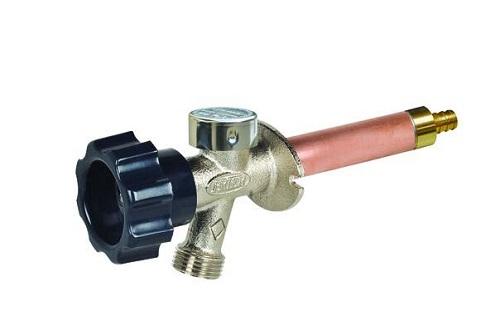A spigot water valve, often simply referred to as an outdoor faucet or hose bib, is a vital component in many residential and commercial properties. Understanding its anatomy and how it works can be incredibly useful, especially when it comes to professional Spigot Water Valve Repair. Let’s delve into the detailed breakdown of the components and mechanics of a spigot water valve.
Body
The body of the spigot water valve is typically made of brass or stainless steel, chosen for their durability and resistance to corrosion. This is the main housing that holds all the internal components together. The body is designed to withstand outdoor elements and provide a sturdy structure for the valve.
Handle
The handle is the part of the spigot that you turn to open or close the valve. It is usually attached to the valve stem and can be made of metal or plastic. The handle’s design can vary, from simple round knobs to more intricate lever designs, but its primary function remains the same: to control the flow of water.

Valve Stem
The valve stem is a crucial component that connects the handle to the internal mechanisms of the spigot. When you turn the handle, the stem moves, either opening or closing the valve. The stem is typically threaded, allowing it to move up and down as the handle is turned, thereby controlling the water flow.
Packing Nut
The packing nut is located around the valve stem and helps create a watertight seal. It compresses the packing material against the stem to prevent water from leaking out of the valve. During professional Spigot Water Valve Repair, the packing nut is often adjusted to stop leaks around the stem.
Washer and Seat
Inside the valve body, at the base of the valve stem, is a washer made of rubber or neoprene. This washer presses against a metal seat to create a seal that stops water flow when the valve is closed. Over time, washers can wear out and may need replacement as part of regular Spigot Water Valve Repair.
Bonnet
The bonnet is a cap that fits over the valve stem and is screwed onto the body of the spigot. It holds the stem in place and, together with the packing nut, helps prevent leaks. The bonnet needs to be securely fastened to maintain the integrity of the spigot.
Inlet and Outlet
The inlet is where the water enters the valve from the main supply line, while the outlet is where the water exits to the hose or faucet. The inlet is typically threaded to connect to the plumbing system, and the outlet may have hose threads for attaching garden hoses or other accessories.
Mechanics of Operation
When the handle of the spigot water valve is turned counter clockwise, the valve stem rises, pulling the washer away from the seat. This movement allows water to flow through the valve from the inlet to the outlet. Turning the handle clockwise lowers the stem, pressing the washer against the seat and stopping the flow of water.



 Click To Call / Text
Click To Call / Text